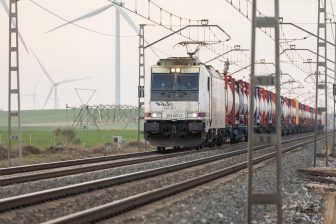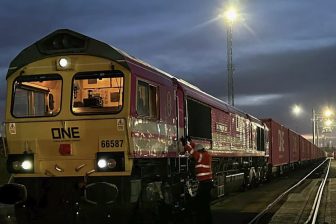Rail freight volumes in the Netherlands no longer in decline
Rail freight transport in the Netherlands increased by 4 per cent last year. This was partly due to the low water level of the main rivers in the country. This led shippers that usually opt for barge transport to shift to rail. The figures indicate a standstill to the decline in rail freight volumes.
This was reported by Prorail, the infrastructure manager in the Netherlands in the annual report on rail freight transport. The total distance of cargo transported by rail amounted to 9.3 million kilometers, the company wrote. The number of freight train kilometers on the Havenspoorlijn increased to 1.3 million (a growth of 5 per cent) and on the mixed network to 5.8 million (a growth of 11 per cent). On the contrary, the dedicated Betuweroute witnessed a decrease of 12 per cent. The number of kilometers travelled on this line came to 2.2 million kilometres last year.
Limitations Betuweroute
The fact that fewer trains made use of the Betuweroute is largely explained by the capacity limitations due to construction on the Third Track between Zevenaar – Oberhausen. This affected rail freight transport wmore in 2018 than in 2017. Last year, 87 days were spent on the construction of the third track. In 2017 these were 42 days.
During the decommissioning, part of the freight trains were diverted. As a result, the number of freight trains on other routes increased, such as on the Brabant route and the Bentheim route via Oldenzaal. In Zevenaar the construction of the third track has been completed at the end of last year. In Germany, the work will continue in the coming years. As a result of the restrictions, some 47 per cent of the freight transport in 2018 took place on the Betuweroute. In 2017, that was 56 per cent.
Port of Rotterdam
Due to the drought and the low water levels in the major rivers, shipping could carry less cargo last summer and autumn. Rail was a good alternative for part of that cargo. This is clearly visible in the figures.
From August the number of freight trains to and from Rotterdam showed an upward trend. Until mid-August there were about 100 to 110 trains going to and from the port of Rotterdam. From mid-August onwards, the number increased from 110 to 120 trains. The increase can mainly be seen in the coal and container sectors. At the beginning of 2018, the number of coal trains was lower than in the previous year. This has to do with the closure of a number of coal-fired power plants in Germany in 2017.
Author: Yvonne Ton





